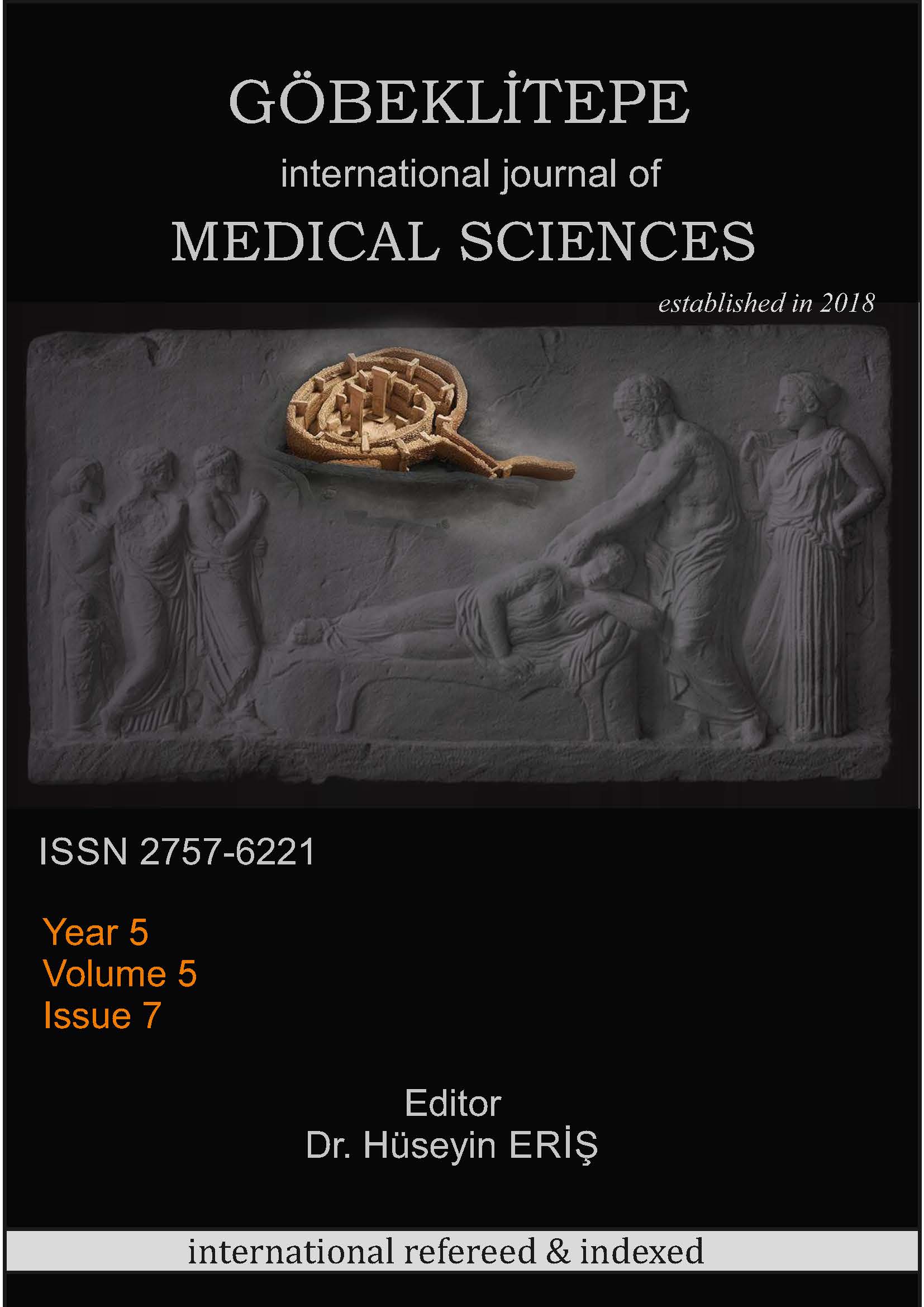FİZYOTERAPİ VE REHABİLİTASYON BÖLÜMÜ ÖĞRENCİLERİNİN EGZERSİZ DAVRANIŞI: KESİTSEL BİR ÇALIŞMA
DOI:
https://doi.org/10.55433/gsbd.151Anahtar Kelimeler:
Egzersiz Davranışı, Fiziksel Aktivite, Fizyoterapi ve Rehabilitasyon, Üniversite ÖğrencileriÖzet
Bu çalışmanın amacı, İstanbul Üniversitesi-Cerrahpaşa’da eğitim gören Fizyoterapi ve Rehabilitasyon (FTR) bölümü öğrencilerinde egzersiz davranışını incelemekti. Çalışmaya 77 birinci sınıf FTR öğrencisi (56 kadın ve 21 erkek) dahil edildi. Öğrencilerin egzersiz alışkanlıkları ve demografik bilgileri “Google Forms” ile oluşturulan bir anket ile sorgulandı. Ayrıca egzersiz davranışını belirlemek için Egzersiz Aşamaları Değişim Ölçeği Kısa Formu (EADÖ-KF), Egzersiz Öz-Etkinlik Ölçeği (EEÖ) ve Egzersiz Karar Verme Dengesi Ölçeği (EKVDÖ) kullanıldı. Fiziksel aktivite düzeyi Uluslararası Fiziksel Aktivite Anketi-Kısa Formu (UFAA-KF) ile değerlendirildi. Öğrencilerin yaş ortalamaları 19,70±2,4 yıl idi. Öğrencilerin %9,1’i düzenli egzersiz yaptığını, %77,9’u sağlığından memnun olduğunu bildirdi. EADÖ-KF’nin beş davranış aşamasına göre, öğrencilerin %2,6’si “devam ettirme”, %15,6’ı “hareket”, %42,9’si “hazırlık”, %33,8’si “düşünme” ve %5,2’u “düşünmeme” aşamasında olduğunu bildirdi. EEÖ ve EKVDÖ skorlarının ortalamaları sırasıyla 10,01±1,88 ve 4,16±2,32 idi. Öğrencilerin %97,’4’ü EKVDÖ’ye göre "egzersiz ile ilgili pozitif algı” bildirdi. UFAA-KF’ye göre öğrencilerin %14,3’ü düşük, %72,7’si orta ve %13’ü ise yüksek fiziksel aktivite seviyesinde idi. UFAA-KF toplam puanı ile EKVDÖ–Genel ve EEÖ skorları arasında anlamlı pozitif korelasyon bulundu (p<0.05). Bu çalışma, FTR öğrencilerinin egzersiz davranışının incelendiği ilk çalışmadır. Öğrencilerin çoğunluğunun egzersiz ile ilgili pozitif algısı olmasına rağmen egzersize düşük aşamada katılım gösterdiği, egzersiz öz-yeterlilik oranının düşük olduğu ve egzersiz öz-yeterliliğinin fiziksel aktivite ile ilişkili olduğu gözlenmiştir. Mesleği tanımaya yeni başlayan birinci sınıf öğrencilerinde egzersiz davranışının tanımlanması, yaşam boyu egzersiz alışkanlığı kazandırılmasının önemli bir adım olduğu görüşündeyiz. Gelecekteki çalışmalarda, öğrencilerde egzersizin potansiyel kolaylaştırıcıları ve engelleri uzun vadede takip edilerek araştırmalıdır.





